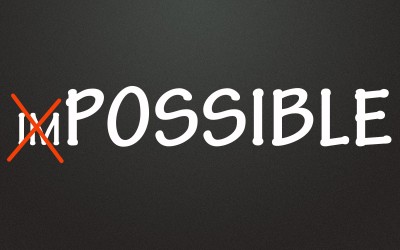Happy Friday!
 Why is it that the work and relationships that plagued you all week look so different on Friday afternoon? The issues and challenges haven’t changed, but somehow you don’t get so riled up about it on Friday. You’re in a great mood, looking forward to a weekend with your family, maybe doing some gardening or camping.
Why is it that the work and relationships that plagued you all week look so different on Friday afternoon? The issues and challenges haven’t changed, but somehow you don’t get so riled up about it on Friday. You’re in a great mood, looking forward to a weekend with your family, maybe doing some gardening or camping.
Sometimes you notice that Friday afternoons are incredibly productive. You make decisions and cross tasks off your to-do list. You don’t get caught in loops of overthinking. You make the phone calls you’ve been putting off all week and they go far better than you expected. You feel energized and confident. During the weekend, thoughts about the week ahead or the past week drift through your consciousness, but you don’t dwell on them. It’s easy to let them go and get back to the present moment.
Now fast forward to Sunday night. The Friday afternoon feeling is long gone. You’re feeling anxious and pre-occupied. You might even have trouble sleeping. Nothing has changed from Friday afternoon to Sunday night in terms of your workload or the people you need to influence and manage. Yet your mood shifted. Back to reality – or so you think.
Here’s another scenario. It’s Friday afternoon, and you’re tired and frustrated. In your mind, the week didn’t go well and you didn’t accomplish all you set out to do. You have a conversation with your boss that turns into an argument. What happened to Happy Friday? You stew about it all weekend long. You try to put it out of your mind but you keep replaying the tape and beating yourself up for how you handled it.
Confusing? Sound familiar? Welcome to the Human Race!
The only way to make sense of these ups and downs is to realize that your mind is always creating your experience of life in the moment through thought from the inside-out. Regardless of the circumstances, the only thing you are ever feeling is the feedback of your thinking. Thoughts are always flowing through your mind — sometimes you pay attention to them and sometimes you don’t.
You didn’t do anything different or magical that productive Friday afternoon – that’s how the mind works in its natural clear and present state. OK, so what happened on the other Friday, when it got ugly with your boss? You were tired and in a low mood, you felt like a failure, and it looked like your circumstances, boss included, were to blame. From that state of mind, of course it didn’t go well. And I’m willing to bet that a little voice in the back of your mind was trying to tell you to back off, but you didn’t listen.
So what’s the takeaway? Life is always an inside-out experience — the day of the week has nothing to do with your state of mind. It’s another misunderstanding that we’ve adopted as truth. What is true is that the human mind is designed for success – it will always give us what we need in the moment. Wisdom and common sense are built in to every one of us.













